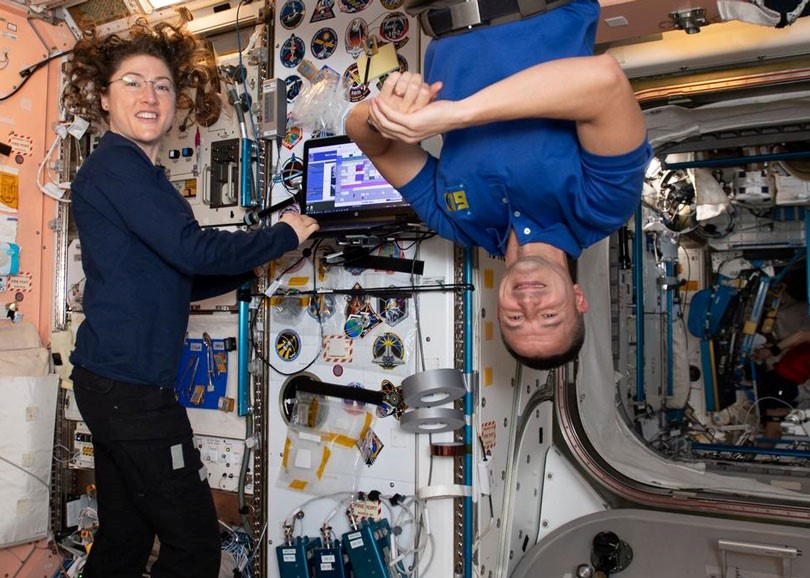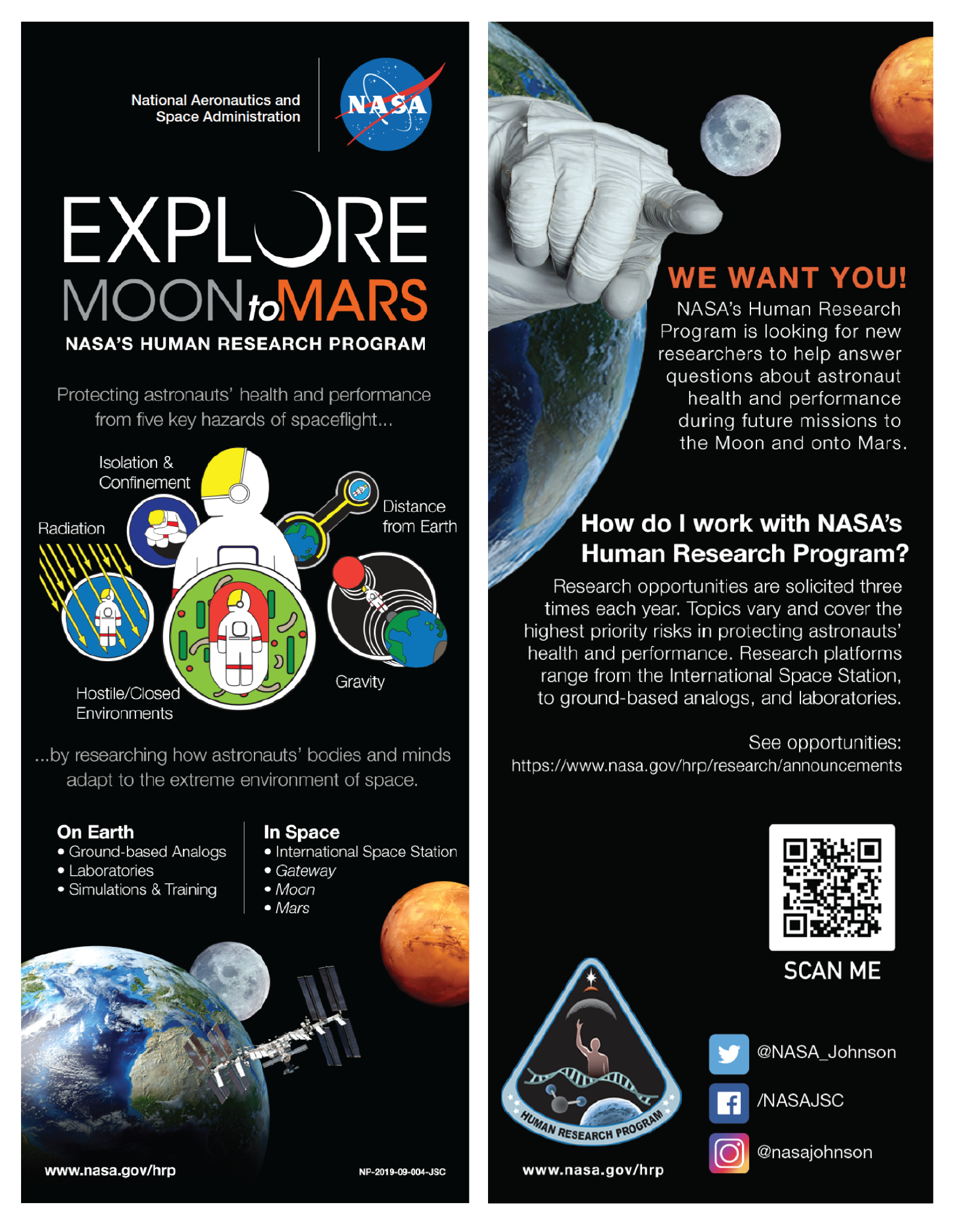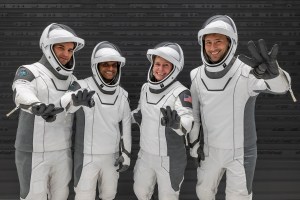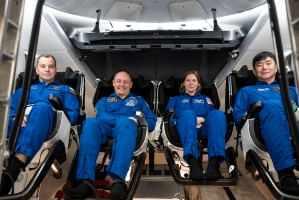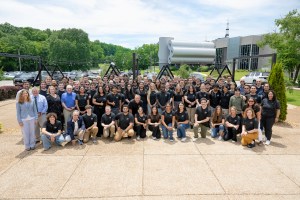NASA has come a long way since Alan Shepard became the first American in space more than 58 years ago. Shepard’s 15-minute mission is the foundation for NASA’s nearly 20-year continuous human presence on the International Space Station, Artemis Moon and future Mars missions. We’ve learned that the human body is very resilient and adaptable, and we’re counting on that adaptability to make long-duration missions possible.
Why do we need to study humans in space? Simple – humans were built for Earth. Although the human body can adapt to extreme environments, changes can affect the mission or the astronaut’s health.
“With NASA’s goal of sending humans back to the Moon and onto Mars, the Human Research Program is charged with understanding how the human body is going to change during these exploration class missions,” said Jennifer Fogarty, Human Research Program chief scientist. “We know the body is changing over the course of the mission and we are documenting this amazing responsiveness and resilience as it prepares humans for the rigors of spaceflight. It’s about knowing how the body adapts to the extreme environment of space, when to intervene and how to maintain human health and performance. We are overcoming challenges now, to help ensure the success of the missions of tomorrow.”
NASA’s Human Research Program, or HRP, studies those changes by conducting research on and off the Earth with the goal of protecting astronauts’ health and performance from five key hazards of spaceflight. Radiation, isolation and confinement, distance from Earth, altered gravity, and hostile/closed environments may cause physiological and psychological changes to astronauts in space that could impact their mission.
The program has adopted a “Mars-forward” approach to research by using unique platforms to study how hazards in space could affect human health and performance in preparation for future missions to Mars. With laboratories on Earth, ground-based analog facilities around the world, and International Space Station, NASA is able to build upon knowledge gained from studies conducted in each platform. Scientific investigations about the human body on the agency’s Gateway lunar outpost and on lunar surface excursions during Artemis missions will be an essential stepping stone for a multiyear mission to Mars.
Research has already helped inform preparation and counter-measures to protect astronauts in space. For example, NASA has learned the value of nutrition and exercise in protecting crewmembers from bone, muscle and cardiovascular deconditioning in space. Also, by studying sleep, behavioral health, and team dynamics researchers are able to provide input into crew composition, lighting technology, and self-assessment tools for cognitive performance.
Additional research is underway to address other remaining risks and hazards. During long-duration missions, some astronauts report changes in eyesight, such as near-distance visual acuity that does not completely resolve upon returning to Earth. Changes in immune functions are also encountered. NASA is studying the causes of these changes and researching effective countermeasures. For example, studies with individuals who are representative of the astronaut corps are participating in strict, head-down tilt bed rest analogs that replicate the effects of microgravity on the human body. Results will not only help NASA better understand these conditions, but guide the design of future spaceflight vehicle environments and technologies.
The complexities of a space voyage to Mars are immense, with the intricacies of the human body being the most arduous of them all. To paraphrase President John F. Kennedy, however, we choose to go to the Moon and make these advancements not because they are easy, but because they are hard. By addressing the health risks of human spaceflight, NASA is moving the Artemis program forward.
_____
NASA’s Human Research Program, or HRP, pursues the best methods and technologies to support safe, productive human space travel. Through science conducted in laboratories, ground-based analogs, and the International Space Station, HRP scrutinizes how spaceflight affects human bodies and behaviors. Such research drives HRP’s quest to innovate ways that keep astronauts healthy and mission-ready as space travel expands to the Moon, Mars, and beyond.


























